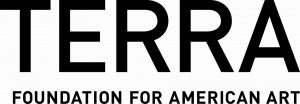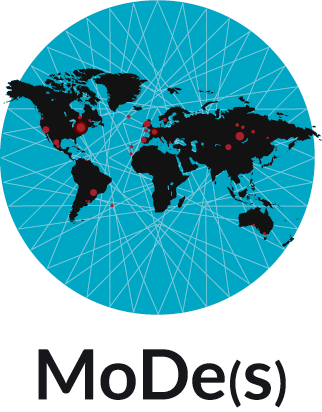International conference Cold Atlantic. Cultural War, Dissident Artistic Practices, Networks and Contact Zones at the Time of the Iron Curtain.
Museo Nacional Centro de Arte Reina Sofía, Madrid, 5-7 September 2016
The international conference Cold Atlantic will examine the artistic, cultural and aesthetic exchanges produced between the USA, Europe, Africa and Latin America during the Cold War. The aim is to highlight the axes of alignment and artistic exchange between the geopolitically minor actors that were trapped inside the huge theatrical strategy from this period. The conference, which will be conducted through round-table discussions, lectures and dialogue, organised through an open international process, looks to recover relatively unstudied nodes of cultural influence and dissemination in its aim to decentralise the Paris-New York axis that still dominates and is ubiquitous in studies on the Cold War and its artistic incarnations, thus fostering discussion that grants a voice to the forms of cultural expression that materialised outside official power structures.
These dialogues and interactions will be analysed within a Cold War context, whilst also proceeding from the destabilisation of the status quo brought about by the Bandung Conference (1955) and the Hungarian Revolution (1956). Consequently, it underscores the forms of mediation, dissent and resistance that sought to offer alternative answers to the ideological and aesthetic split that defined the cultural and social climate after World War Two. The conference will call into question canonical narratives of artistic modernity by exploring transatlantic artistic networks, with a view to eliciting the plurality of the responses to the ideological positioning this war held on a cultural level. Therefore, from this perspective Cold Atlantic will chart a new cartography of artistic practices and institutional relations, both subjective and political.
The re-evaluation of crossroads and friction in artistic production, material culture and political resistance will help to reconsider different accounts of modern art’s struggle, displaying alternatives to the prevailing Western vision, whilst also calling attention to the links that would bring dissident responses to life in the geopolitical order of the Cold War, a key period in the configuration of today’s global world. Spain’s own “peripheral” position with regard to the UK, France and the United States opens up a space that fosters a reconsideration of the role of modern art, questioning accounts based on the concept of progress that have predominated the study of artistic modernity.
 Report
Report
 Multimedia
Multimedia
Museo Nacional Centro de Arte Reina Sofía, Edificio Nouvel, Auditorio 200.
Program
Monday 5 September
9.00-9.30 > Welcome
9.30-14.00 > Panel 1 Networks, nodes and contact zones for a non-aligned geopolitical order – with a keynote lecture by Walter Mignolo (Duke University).
14.00-16.00 > Lunch break.
16.00-19.50 > Panel 2 – Competing Hegemonies – with a keynote lecture by Sarah Wilson (The Courtauld Institute of Art).
Tuesday 6 September
9.30-14.00 > Panel 3 – Resistance, dissidence and utopias(s) – with a keynote lecture by Andrea Giunta (Universidad de Buenos Aires and University of Texas at Austin).
14.00-16.00 > Lunch break.
16.00-19.50 > Panel 4 – Global order: Cold War and beyond – with a keynote lecture by Jonathan Harris (Birmingham City University).
Wednesday 7 September
17.00-19.00 > Lecture, roundtable and discussion led by Serge Guilbaut (University of British Columbia).
19.00-19.40 > Final remarks and and closing.
Full programme of the four panels:
Networks, nodes and contact zones for a non-aligned geopolitical order
Monday 5 September, morning
Chair: Jesús Carrillo (Universidad Autónoma de Madrid)
From the 1955 conference of Bandung, the Non-Aligned Movement (NAM) offered an alternative to the bipolar division of the world imposed by the two superpowers. The choice to look for another configuration of the world did not just create a league of peripheral nation-states but inspired as well cultural and artistic formations. This priority axis of Cold Atlantic aims to encourage transnational studies seeking to expose the networks of collaboration and contact zones developed by artists, critics, curators or institutions in dialogue with or inspired by the NAM. Thus, we hope to reveal the way in which these alternative constellations contributed to the development of a transatlantic (and transcontinental) culture and to show in how far those entanglements helped to subvert the bipolar geographies of the Cold War.
9.30-10.30 > Keynote lecture: Walter Mignolo (Duke University), The Bandung’s Legacies at Large.
10.30-11.15 > Armin Medosch (Faculty of Media and Communications, University of Singidunum, Belgrade), Cold Art Collectives
Jennifer Josten (University of Pittsburgh), Non-Aligned Modernism in Mexico: Mathias Goeritz and the 1968 Olympics
11.15-11.45 > Coffee break
11.45-12.30 > Katarzyna Cytlak (CEMECH-UNSAM/CONICET, Argentina), Red Atlantic: artistic networks of the Cold War margins. Relations between Eastern Europe and Latin America in the 1970s and 1980s.
Bojana Piškur (Moderna galerija, Ljubljana & member of the editorial team of L’Internationale Online), Solidarity in Arts and Culture. Some cases from the Non Aligned Movement.
12.30-13.00 > Questions
13.00-13.20 > Response: Atreyee Gupta (Minneapolis Institute of Art)
13.20-14.00 > Roundtable and discussion
Competing Hegemonies
Monday 5 September, afternoon
Chair: Mark Nash (Nanyang Technological University/Birkbeck University of London)
The Cold War, with its primary opposition between two superpowers (the USA and the USSR), provided the bilateral framework for the aspirations of governments and oppositional elites to be “modern”. Negotiations between different notions of modernity and the terms and conditions of the local contexts resulted in a wide range of often contradictory aesthetic discourses and artistic practices. Claims for autonomy, sovereignty and progress coincided with a need to be recognized as members of the new geopolitical order. This priority axis of Cold Atlantic aims to discuss, from a pluralistic angle, the exchanges, negotiations and confrontations that the battle for cultural hegemony entailed, giving rise to the emergence of various geopolitical powers in the increasingly globalizing arena of the Cold War.
16.00-17.00 > Keynote lecture: Sarah Wilson (The Courtauld Institute of Art), *Picasso in China: **Writing the opera, 2014.
17.00-17.45 > Vardan Azatyan (Ashot Johannissyan Research Institute in the Humanities, Armenia), Art History, the Ape of the Cold War: the Case of H. W. Janson
Michele Greet (George Mason University), Andean Abstraction as Displayed at the OAS
17.45-18.15 > Coffee break
18.15-19.00 > Fabiola Martínez Rodríguez (Saint Louis University, Campus Madrid), The Inter-American Biennials in Mexico 1958 and 1960
Irene Herner (Universidad Nacional Autónoma de México), Siqueiros and the Cold War (1955-1974)
19.00-19.30 > Questions
19.30-19.50 > Response: Julia Bailey (Tate Modern)
19.50-20.30 > Roundtable and discussion
Resistance, dissidence and utopia(s)
Tuesday 6 September, morning
Chair: Olga Fernández López (Universidad Autónoma de Madrid)
In a world where imperialist and neo-colonial politics were imposed on both sides of the iron curtain, artistic practices provided ways to resists, subvert and combat them. This priority axis of Cold Atlantic aims to study vanguard and experimental artistic practices analyzing their aesthetic, political and social bases (and contexts), and their role as models for resistance against the normative culture(s) of the Cold War. Thus we seek to highlight the role of artistic production and cultural agents, operating in both, hegemonic and subaltern centers, as subversive tools in countercultural movements within the transatlantic axis, and to show their potential for imagining alternative forms of society.
9.30-10.30 > Keynote lecture: Andrea Giunta (Universidad de Buenos Aires and University of Texas at Austin), Descolonización del canon: archivos del feminismo artístico en América latina, 1960s-1980s.
10.30-11.15 > Petra Lange-Berndt (Universität Hamburg), Cold War Communes
Jacopo Galimberti (Centre Georges Pompidou), Transindividuality and Singularities. Western Artists against the Free World
11.15-11.45 > Coffee break
11.45-12.30 > Maria Gaztambide (International Center for the Arts of the Americas, Museum of Fine Arts Houston), Dead Matter for an Enlivened Practice: The Dissident Scatology of Venezuela’s El Techo de la Ballena
George Flaherty (University of Texas, Austin), Chicano Camera, Anti-colonial Aesthetics
12.30-13.00 > Questions
13.00-13.20 > Response: Jaime Vindel (Universidad Complutense de Madrid)
13.20-14.00 > Roundtable and discussion
Global order: Cold War and beyond
Tuesday 6 September, afternoon
Chair: Chema González (Museo Reina Sofía)
In 1967 the French philosopher Guy Debord understood the bipolar division of the world between capitalism and communism as an interdependent and global system of a total spectacle. He quickly felt that the complex geopolitical entanglements that the political, economic and cultural spheres entailed, accelerating with the radical development of market -communication- and media networks, were evolving into a single totality; the latter, in fact, becoming greatly responsible for shaping today’s globalized world. This priority axis of Cold Atlantic considers the entanglements and dialogues between artistic and cultural spheres during the Cold War, and their persistence in the contemporary world. It seeks to show in how far transatlantic configurations, in the transition from modernity to post-modernity, inform today’s global order.
16.00-17.00 > Keynote lecture: Jonathan Harris (Birmingham City University), Global Contemporary Art and Legacies of the Cold War: South Korea’s ‘Real DMZ Project’, 2011-2013
17.00-17.45 > Erina Duganne (Texas State University), Group Material’s “Art for the Future”: Visualizing Transnational Solidarity at the End of the Cold War
Andrea Noble (Durham University) y Thy Pu (Western University, Canadá), Cold War Camera: Feeling Suspicious
17.45-18.15 > Coffee break
18.15-19.00 > Kristian Hanberg (The University of Copenhagen and Louisiana Museum of Modern Art), Multiple modernism: New globalized framings of the postwar era in the contemporary exhibitions After Year Zero and The World Goes Pop
Terry Smith (University of Pittsburgh), Cold War Recurrence, Contemporary Events
19.00-19.30 > Questions
19.30-19.50 > Response: Paula Barreiro López (Universidad de Barcelona)
19.50-20.30 > Roundtable and discussion
Listen to the podcast where organizers Paula Barreiro López and Fabiola Martínez present the contents and objectives of the Conference, with contributions from participants Andrea Giunta and Jonathan Harris.
Access to the audio recordings of the lectures.
Read the review of the conference published by Tobias Locker in H/SOZ/KULT (April 2017)
Consult the Call for papers (January 2016)
Photo gallery
Organized by: Universitat de Barcelona, Universidad de Saint-Louis (Madrid), Universidad Autónoma de Madrid and Museo Reina Sofía.
With the generous support of: Terra Foundation for American Art.
Within the framework of the research project: Modernidad(es) Descentralizada(s): arte, política y contracultura en el eje transatlántico durante la Guerra Fría (HAR2014-53834-P).
Related activity: Predoctoral seminar Cold Atlantic, 8-9 September 2016, Universitat de Barcelona.


![]()



Image: Equipo Crónica. El realismo socialista y el Pop Art en el campo de batalla, 1969. Pintura, Colección Museo Nacional Centro de Arte Reina Sofía. Depósito temporal de Manuel Valdés, 2010
